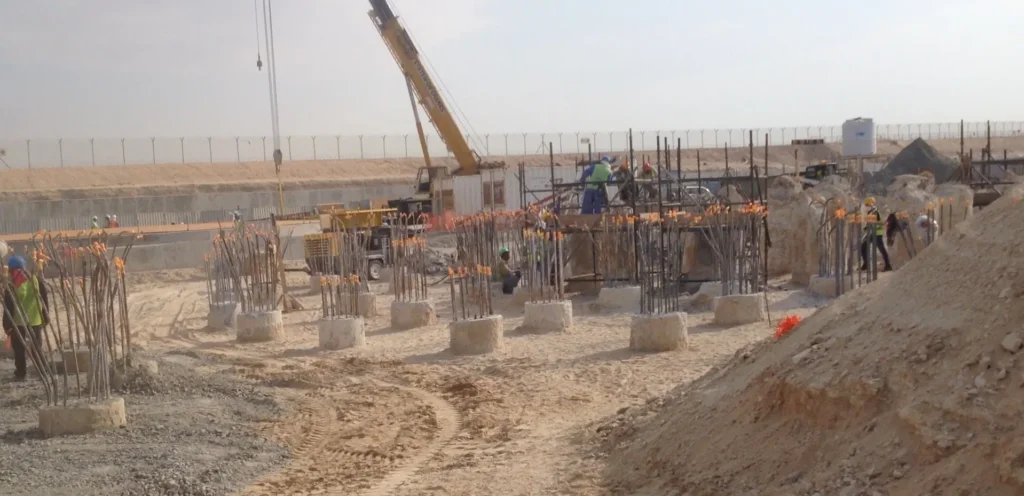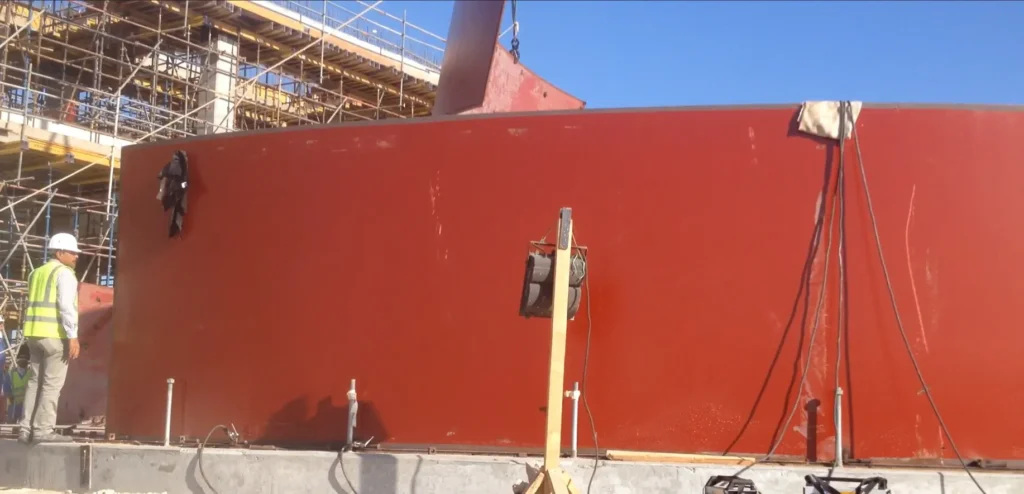Architects / 12 site supervision steps Introduction is the first article of a series of articles to share and illustrate years of the author’s architectural experience in the supervision field. The experience in supervision of various types of projects and functions, like industrial, residential, commercial, recreational, entertainment, and even military projects. Projects I worked on and supervised, for example district cooling plant of Abu Dhabi Airport, an industrial building that supplies the airport with chilled air. Other projects, like the Emirates Industrial Bank, of a mixed-use function. A privately funded school building, including sports facilities.
Site Supervision Vs contracting work
In this article, I emphasize the difference between site supervision and supervision in contracting work. Site supervision on the consultant side focuses on various activities. Transferring the architecture program and project to reality through the construction drawings execution. Selecting the proper supervision team based on analysis of performance and skills. Documents that support the team to supervise the work on the site. What type of standards in the project documents to use to transform the project into reality? The site team focuses on on-site supervision of methods, processes, and teaching and commissioning procedures.
Architects rarely at the beginning of their career understand what is the importance of supervision. This article shows this importance and how it will serve in the future career of an architect. Architects work in the site supervision whether owner or employee for several reasons. First, satisfy the contract, legal, and authority requirements of any projects under a consultancy contract. second, assure to clients of the high quality of the final project quality through the application of the supervision process. Third, track all the safety measures, and procedures of the architectural design and to keep the project to its maximum safety design criteria. Fourth, add to the consultant firm another high quality, class project, and credit to the company profile and reputation. Figure 1, civil work of pile construction.

When an architect should work in site supervision
I have met many architects in my career who get involved in supervision in different timelines of the work career. Some architects and colleagues do supervision when it is required by the company. They go to the site to supervise specific items in the project scope, or a problem arises on the site. My book shows when should the architect get involved or transfer to site supervision in his career. The book gives extreme details from practice on the process and methods of site work. Why it is important for future business if an architect thinks of starting a business.
Architects work on the site but do not analyze what is required to get into the site supervision work. Architects get trapped in supervising architecture work only when they have extensive architectural experience. Their level of income also gets trapped in some range that does not increase more than that level. I have worked on several types of projects in my career. All the projects require different types of knowledge in the building design specialty. Architects need construction and supervision knowledge of structural and civil engineering work. Due to the interaction and intervention between architecture, mechanical, and electrical engineering works, architects need expertise in these fields. Architects need supervision expertise in the former fields to better supervise the architecture work as per the planned schedule.
Architects need to have specific supervision of personal quality of management, negotiation, understanding, and adjustment to change.
What knowledge and skills development needed for site supervision
Innovation in architecture design, architecture intelligence, and construction theory presents to the field of engineering new information, and knowledge. Architects working in site supervision must always update and adapt to changes in construction theory and methods. Their knowledge of the construction methods and the use of new materials must be updated. This could be by taking CPD programs and training courses or studying for higher degrees. Figure 2, steel construction of TES.

Architects Obtain the required site supervision expertise in specific items, methods, and theories of construction either from colleagues in the consultancy company. This expertise comes from direct contact with colleagues on the site through open discussions, online meetings, or site meetings. In my career, I have obtained extra experience in the field of site supervision by visiting friends and conducting construction work on other projects in my free time.
Online videos and short courses (free) on construction site supervision of various items of building construction are other forms of available resources. Many engineers and architects develop websites to share their experience in the site supervision of some items to promote for their blog, website, or any marketing purpose.
Architects doing site supervision supervise different activities for different building items when they are in a team than when they are alone on one project. Here the team lead identifies certain items and allocates the supervision of these items to different team members. He defines a schedule for the supervision of specific details of the items allocated to team members. A schedule of meetings with the main engineering teams designed by the team lead gets into action as per the timeline.
what I present to professionals here for site supervision
In this series of articles, the reader from any background gets to know the main and major roles, activities, methods, and processes of supervision of architecture in projects. Here in this article, the reader will understand What tools, and software the architect needs in site supervision of several types of projects.
[…] Architects / 12 site supervision steps: Introduction […]
[…] Architects / 12 site supervision steps: Introduction […]
[…] Architects / 12 site supervision steps: Introduction […]
[…] Architects / 12 site supervision steps: Introduction […]
[…] Architects / 12 site supervision steps: Introduction […]
[…] Architects / 12 site supervision steps: Introduction […]
[…] Architects / 12 site supervision steps: Introduction […]
[…] Architects / 12 site supervision steps: Introduction […]
[…] Architects / 12 site supervision steps: Introduction […]